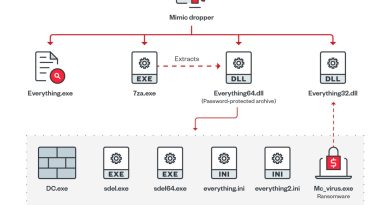Human vs Machine Identity Risk Management

Risk Management of Human and Machine Identity in a Zero Trust Security Context
In today’s business world’s dynamic and ever-changing digital landscape, organizations encounter escalating security challenges that demand a more business-friendly and pertinent approach. Conventional security measures frequently lead to adverse effects on business operations.
However, the advent of Zero Trust security offers organizations the opportunity to embrace a risk-based response strategy that effectively mitigates these risks. The concept of identity is central to the effectiveness of security functions, which serves as a critical factor in guaranteeing the precision and security of transactions and data storage.
All security functions are fundamentally centered around identity. The statement, “Who did what to what, when,” encapsulates the core significance of identity in security. The accuracy and integrity of this statement rely on the accuracy and integrity of each identity clause. By ensuring the integrity of these identity clauses, organizations can automate the risk management process with high confidence in the outcomes.
Traditionally, security systems were designed assuming that human operators were solely responsible for all decisions made by machines. However, with the advent of computers and the increasing reliance on automated processes, this operator-centric model has become increasingly inadequate.
While humans and their associated accounts are often the primary targets of security measures, they merely represent the activity of the machines they interact with. In a Zero Trust deployment, embracing the concept of “machine as proxy human” becomes crucial. This approach allows organizations to apply security rules and surveillance to all devices, treating them like a malicious human is operating behind them.
By considering machines as proxy humans within the context of Zero Trust, organizations can extend security measures to encompass all devices and systems within their environment. This includes user devices, servers, IoT devices, and other interconnected components. Organizations can enforce strict access controls by treating machines as potential threat actors, applying behavioral analytics, and continuously monitoring for suspicious activities or deviations from expected behavior.
This shift in mindset enables organizations to proactively detect and respond to potential security threats, regardless of whether they originate from human actors or compromised machines. It allows for a more comprehensive and robust security posture, as security measures are applied at the device level, reducing the risk of unauthorized access, data breaches, and other security incidents.
Recognizing the centrality of identity in security and embracing the concept of “machine as proxy human” in a Zero Trust deployment enhances the effectiveness and comprehensiveness of security measures. By treating all devices as potential threat actors and applying security rules and surveillance accordingly, organizations can strengthen their risk management process, automate security controls, and mitigate the risks associated with human and machine-based security threats.
Treating all accounts, human or not, as machine/service accounts offer architectural flexibility in a Zero Trust environment. This approach allows organizations to apply consistent security measures to unknown devices, users, networks, and known entities, regardless of how frequently they change.
However, harmonized identity telemetry is crucial for this machine-human approach to be effective. Subscriber Identity Modules (SIM cards) and additional credentials facilitate Zero Trust management in 4G and 5G environments.
Organizations can incorporate a Software Bill of Materials (SBOM) into their Zero Trust solution to address the risks associated with the software. A SBOM is a comprehensive inventory that identifies the software components within an organization’s infrastructure, including internally developed and third-party/vendor-provided software.
By implementing a SMOB in a Zero Trust environment, organizations can establish a baseline for expected software behavior. This baseline includes the software’s version, dependencies, and associated digital signatures. Any deviations from this baseline can be identified as potential security threats or indicators of compromise.
One of the significant advantages of incorporating SMOB into a Zero Trust solution is the ability to monitor unexpected behaviors. Organizations can detect any suspicious activities or unauthorized modifications by continuously monitoring the software components and comparing their actual behavior against the established baseline. This proactive monitoring helps incident responders and risk management teams identify potential threats early and respond effectively to mitigate the risks.
Furthermore, SMOB facilitates supply chain component mapping, crucial for incident response and risk management. With a detailed inventory of software components, organizations can trace the origin of each component and identify potential vulnerabilities or compromised elements within their supply chain. This mapping capability enhances incident response capabilities by providing visibility into the interconnectedness of various software components and their potential impact on the organization’s overall security.
Ultimately incorporating SMOB into a Zero Trust solution helps organizations address software-related risks more effectively. By establishing baselines for expected software behavior and monitoring for any deviations, organizations can detect and respond to potential threats promptly. SMOB also facilitates supply chain component mapping, enabling organizations to enhance their incident response capabilities and mitigate the risks associated with software vulnerabilities and compromises.
Zero Trust security offers a surveillance-based approach that continuously checks and cross-references identity, assesses behavioral risk, and compares it to potential losses and revenue. This approach brings several recommendations for organizations looking to enhance their security posture:
- Changes to executive responsibility and board governance require the adoption of Zero Trust security
With the increasing importance of cybersecurity in today’s digital landscape, executive leadership, and board members need to prioritize and understand the significance of Zero Trust security. This includes making it a strategic focus and allocating resources for its implementation. By recognizing the value of Zero Trust and incorporating it into governance structures, organizations can ensure a top-down commitment to robust security practices. - Zero Trust can help organizations meet government and customer requirements for supply chain resiliency
Supply chains have become more vulnerable to cyber threats, and government regulations and customer expectations emphasize supply chain resiliency. Zero Trust security measures can provide transparency, control, and trust within the supply chain ecosystem. Organizations can demonstrate their commitment to supply chain security and meet compliance requirements by establishing rigorous authentication, continuous monitoring, and granular access controls. - Operational risk management automation tools in Zero Trust can streamline security management and reduce enterprise risk and total cost of ownership
Zero Trust security frameworks offer automation tools that streamline security management processes. Organizations can reduce human error and enhance operational efficiency by automating tasks such as identity verification, access controls, and threat detection. This automation minimizes security risks and reduces the total cost of ownership associated with managing complex security infrastructures. - Simplification of security management in Zero Trust can address the security skills gap by enabling reliance on junior or offshore staff for incident diagnoses
The shortage of skilled cybersecurity professionals is a significant challenge for many organizations. Zero Trust can alleviate this skills gap by simplifying security management and enabling the reliance on junior or offshore staff for incident diagnoses. With streamlined processes, intuitive security controls, and automated monitoring, organizations can empower less experienced staff to effectively handle security incidents, optimizing resources and addressing the skills shortage.
By prioritizing identity integrity and leveraging the benefits of Zero Trust, organizations can establish a robust security framework that maximizes enterprise functionality while minimizing risk. In an increasingly unstable world where cyber threats continue to evolve, adopting a sophisticated, nuanced, and cost-effective security approach such as Zero Trust becomes essential for organizations to thrive and maintain resilience in the face of emerging challenges.
Ready to take your organization’s security to the next level? Download our comprehensive report on “Zero Trust: Enforcing Business Risk Reduction Through Security Risk Reduction” to gain valuable insights and practical strategies for implementing a business-friendly security approach. Discover how Zero Trust can minimize negative impacts, enhance risk management, and safeguard digital assets. Click here to download the report now!
Read More HERE




